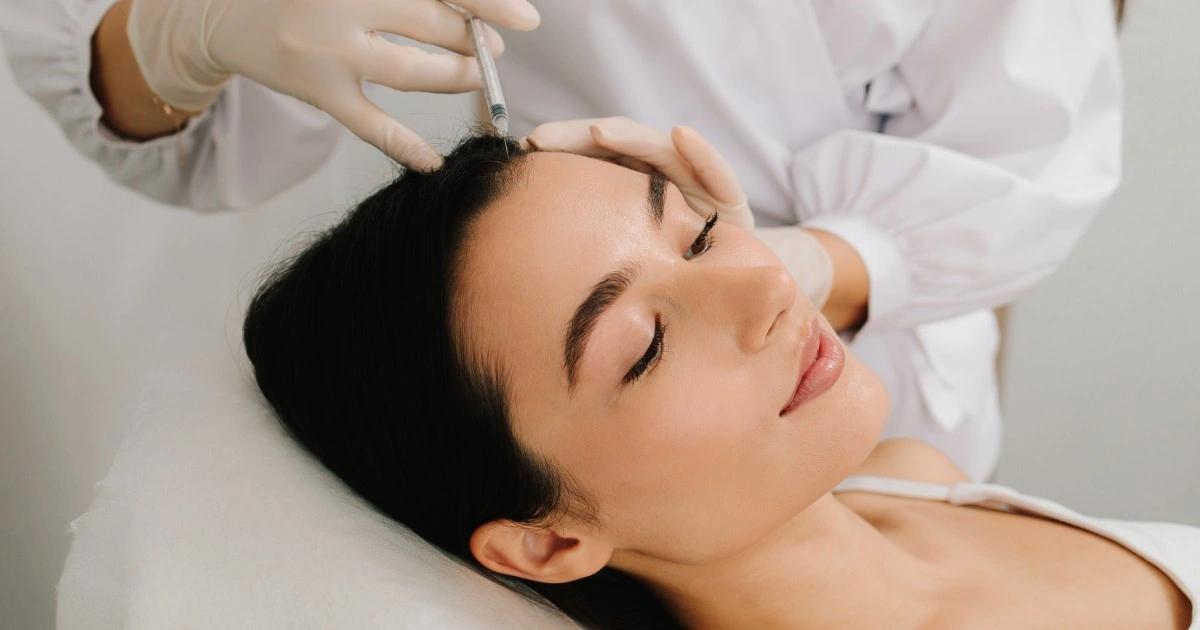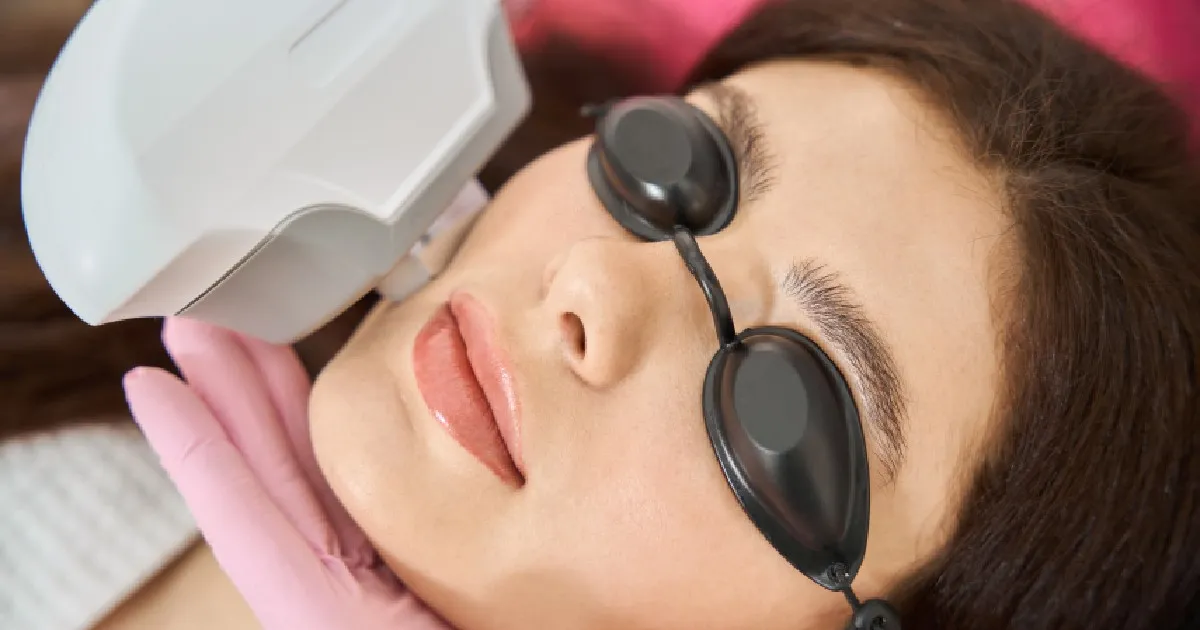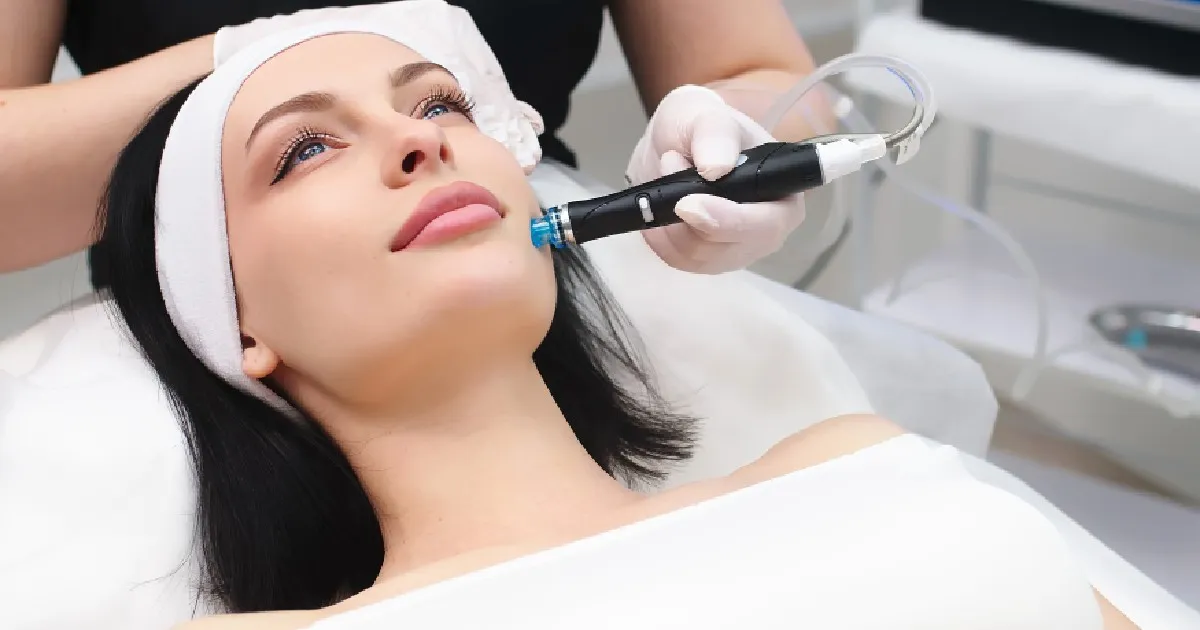Laser skin resurfacing can turn back the hands of time, revealing smoother, brighter, and more youthful-looking skin that looks as good as it feels. This innovative cosmetic procedure uses laser technology to remove damaged or aging skin cells, promoting the growth of healthy new tissue for a smoother, more youthful-looking complexion. With a variety of options available to suit different skin types and concerns, laser skin resurfacing is a powerful tool for achieving a more confident and radiant appearance.
What Is Laser Skin Resurfacing?
It is a cosmetic procedure that uses concentrated laser energy to improve the appearance of the skin by removing or minimizing fine lines, wrinkles, scars, age spots, and other blemishes. The laser energy works by penetrating the outer layer of the skin and heating the underlying tissue, which stimulates the production of collagen and elastin. This process can help to tighten and smooth the skin, improving its texture and overall appearance.
There are two main types of laser skin resurfacing: ablative and non-ablative. Ablative resurfacing is a more aggressive approach that removes the outer layer of skin entirely.
In contrast, non-ablative resurfacing leaves the outer layer of skin intact but heats the underlying tissue to promote collagen production. Both types of laser resurfacing can effectively improve the skin’s appearance, but ablative resurfacing generally produces more dramatic results and requires a longer recovery time.
How Much Does Laser Skin Resurfacing Cost?
The cost of laser skin resurfacing surgery can vary depending on several factors, such as the type of laser used, the area being treated, the clinic’s geographical location, and the practitioner’s expertise. Generally, ablative laser resurfacing treatments are more expensive than non-ablative treatments, requiring a more invasive approach and a longer recovery.
In fact, non-ablative laser treatments cost about $1,031 per session, while ablative treatments cost about $2,330 per session, according to the American Society of Plastic Surgeons (ASPS). This average cost is only a portion of the total price, not including any additional costs.
It is recommended to consult with a qualified healthcare professional to discuss the potential costs and determine the best treatment plan based on the unique needs and budget. Choosing a reputable and experienced practitioner with a track record of successful laser skin resurfacing treatments is vital to ensure the best possible outcome.
What Happens During The Laser Skin Resurfacing Surgery?
During a laser skin resurfacing surgery, the patient will typically be given local or topical anesthesia to help manage discomfort. The specific steps of the procedure may vary depending on the type of laser being used and the area being treated, but generally, the following steps will occur:
- The treated area will be thoroughly cleansed and prepared for laser treatment.
- The healthcare professional will use a laser (either Venus Viva™ or Venus Versa™) to deliver short pulses of light energy to the skin. The laser may be ablative or non-ablative, depending on the desired results.
- Some lasers may include a cooling mechanism to help manage any discomfort during the treatment.
- After the laser treatment, the area may be dressed with ointment or a dressing to help manage to swell and promote healing.
- After the procedure, patients may experience redness, swelling, and discomfort for a few days to a few weeks. It is crucial to follow post-treatment care instructions carefully to minimize the risk of complications and to ensure optimal results.
The laser skin resurfacing procedure is typically performed on an outpatient basis. Depending on the extent of the treatment, it can take anywhere from 15-30 minutes, depending on the area being treated.
Who Are Good Candidates For This Treatment?
Generally, candidates for laser skin resurfacing are individuals who:
- Have mild to moderate signs of aging, such as fine lines and wrinkles.
- Have acne scars or other types of scarring on the skin.
- Have sun-damaged skin or hyperpigmentation.
- Have uneven skin texture or tone.
- Have dark spots or age spots on the skin.
However, it is important to note that laser skin resurfacing may not suit everyone. People with active skin infections, open wounds, or certain medical conditions, such as a history of skin cancer, may not be good candidates for the procedure.
Additionally, people who have recently undergone certain cosmetic treatments, such as a chemical peel, may need to wait before having laser skin resurfacing. It is recommended to consult with a qualified healthcare professional to determine if laser skin resurfacing is the right treatment and to discuss options based on unique skin types and concerns.
How Many Sessions Are Required?
The number of sessions required for laser skin resurfacing can vary depending on several factors, including the type of laser used, the depth of the skin damage being treated, and the desired outcome. Most patients receive 3-4 treatments per area to achieve their desired results.
Non-ablative laser treatments typically require multiple sessions, as they work by stimulating collagen production over time. Patients may require between three to six treatments spaced four weeks apart to see optimal results.
On the other hand, ablative laser treatments typically only require one to two sessions, as they remove the top layer of damaged skin to reveal smoother, younger-looking skin underneath. It is important to consult a qualified practitioner thoroughly to determine the best treatment plan for specific needs and goals.
What Are The Possible Risks?
Like any medical procedure, laser skin resurfacing does carry some risks. Here are some possible risks that patients should be aware of:
- Swelling and redness
- Pain and discomfort
- Infection
- Hypopigmentation or hyperpigmentation
- Skin sensitivity
Discussing these risks with the healthcare professional before the procedure and carefully following all post-treatment instructions to minimize the risk of complications is important. With proper preparation and care, most patients experience safe and successful outcomes from laser skin resurfacing.
How Long Will Results Last?
The duration of laser skin resurfacing results can vary depending on several factors, including the type of laser used, the extent of the treatment, and the patient’s skin type and condition. In general, the results of laser skin resurfacing can last anywhere from a few months to several years.
For example, the results of ablative laser resurfacing procedures, which remove the outer layers of skin, may last longer than non-ablative laser procedures, which stimulate collagen production without removing the outer layers of skin. However, ablative procedures may also require more downtime and may carry a higher risk of side effects.
To maintain the results of laser skin resurfacing, it is important to follow a good skincare routine, including regular use of sunscreen and avoiding exposure to environmental factors that can damage the skin, such as smoking and excessive sun exposure. In some cases, a follow-up treatment may also be recommended to help maintain the initial treatment results.
The Bottom Line
If you feel self-conscious about your skin’s appearance due to acne scars, fine lines, or other skin imperfections, laser skin resurfacing surgery may be the solution you’ve been looking for.
Meridian Medical Spa offers Venus Concept’s skin resurfacing treatments that can effectively reduce signs of skin damage and improve the appearance of uneven skin texture, no matter how fair or dark your skin tone is. With just a couple of quick sessions, you’ll notice a naturally smoother, more radiant, and healthier-looking complexion that lasts.






